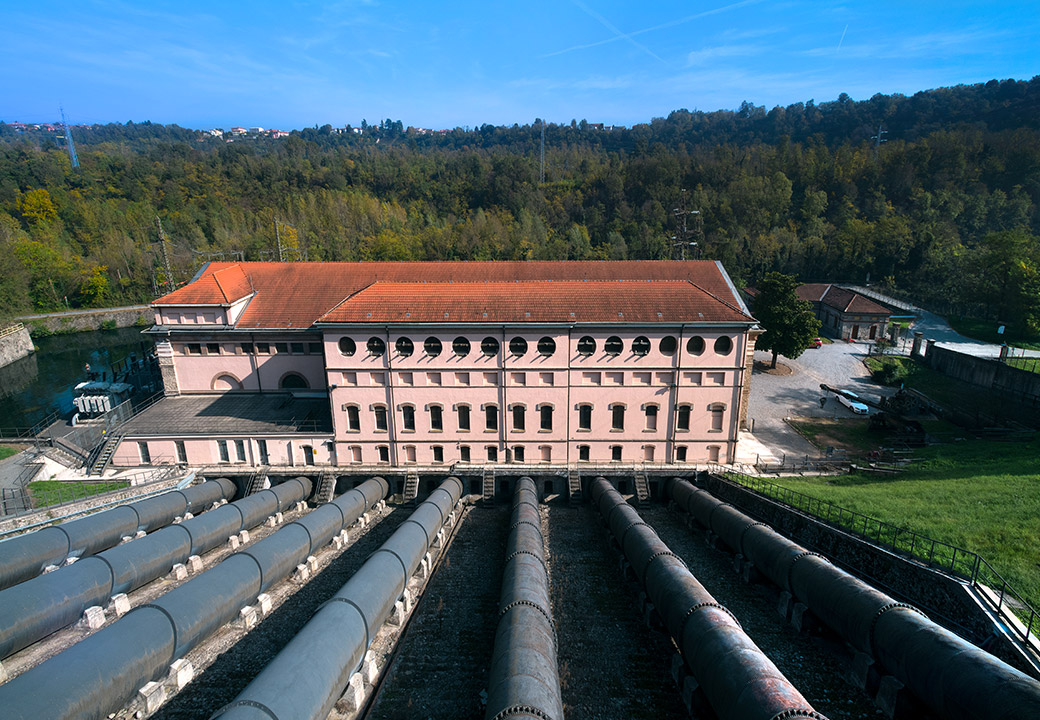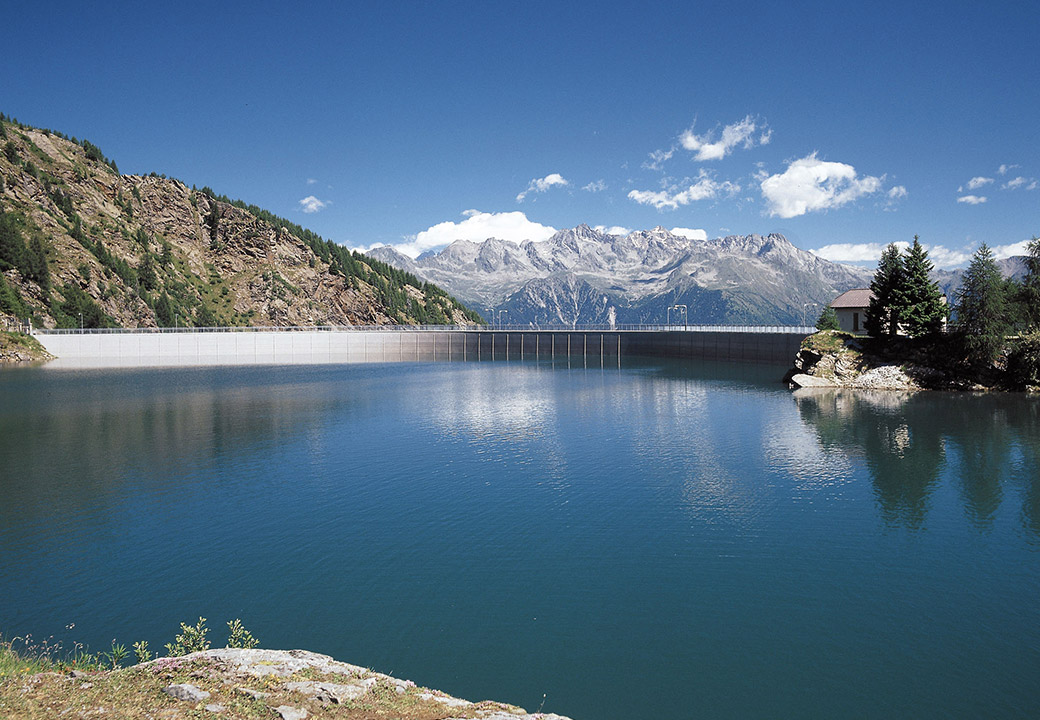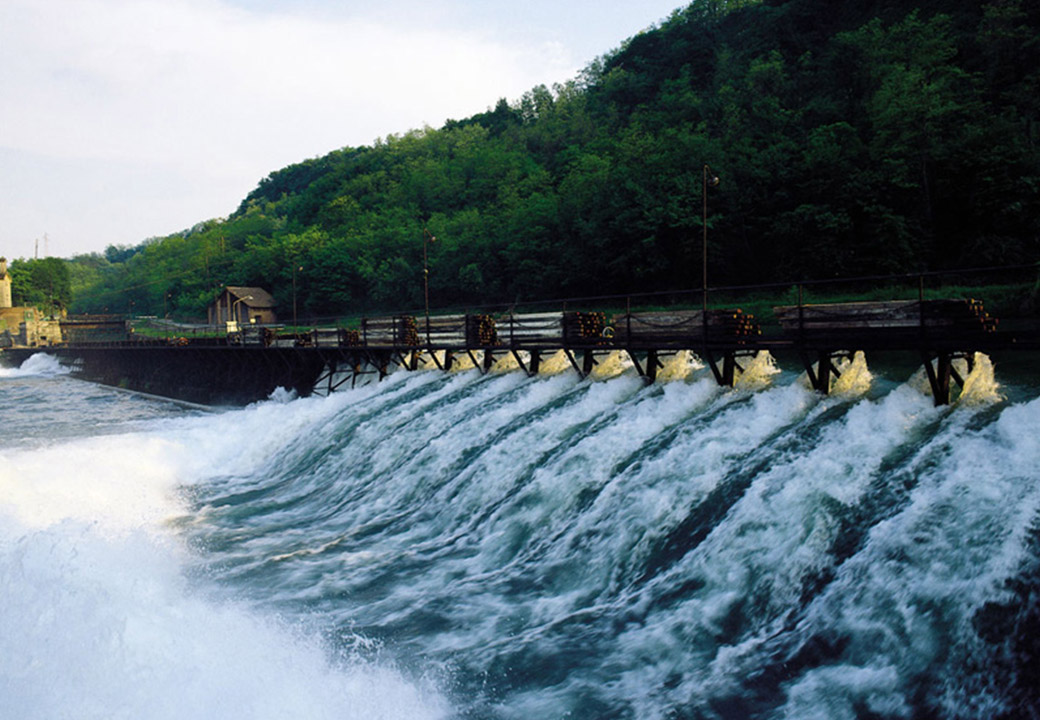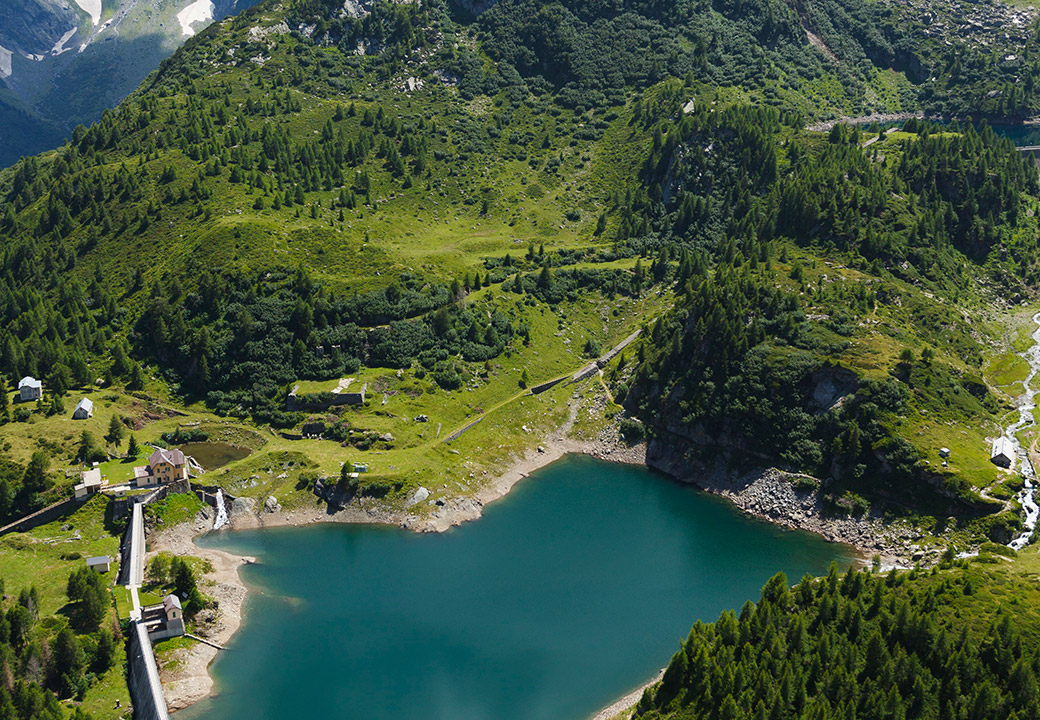Hydro pumping facilities play a crucial role in guaranteeing resilience and flexibility to our national electricity system and are the best solution to congestion.
Hydroelectric power is to us a strategic asset to energy transition as well as the main dispatchable renewable energy source. Italy's Integrated National Energy and Climate Plan (PNIEC) establishes the installation of storage systems to reach overall capacity of 10 GW within 2030, among which 6 GW of utility scale, through hydro pumping facilities and electrochemical storage systems. Moreover, considering recent scenarios, national operators Terna and Snam decided to expand overall national capacity for utility scale to 8.9 GW within 2030.
Hydro pumping systems
By representing today's most secure storage technology available, hydro pumping systems are a real strategic resource for the country's energy system, as they provide rapidly high-end flexibility services, which are necessary to an efficient integration of renewable non-dispatchable sources like wind power and photovoltaic in the national energy mix by ensuring solidity, adequacy of provisions, qualityin streaming and security to the national electricity system.
Security and flexibility
In the frame of importance of storage systems mentioned above, a strategic role is played by hydro pumping turbines. unlike fossil resources, hydro storage systems are a key source to guarantee the the greed the highest flexibility and security, and facilitiate integration of all other RES. Hydroelectric technologies contribute to the solidity of our power supply by reducing our reliance on external providers and fostering competitiveness in the national electricity market.


Storage systems: towards 2030
Unlike in the past, when storage systems absorbed energy during off-peak hours and released it during peaks, today's storage systems absorb energy in central hours (with a ngeative charge and maximum production from RES) and produce it in the remaining hours, when RES energy production is lower.
This allows:
- to cope with energy requirement in high peak hours and low contribution of non-dispatchable RES,
- to reduce greed congestions and overgenerations,
- to provide greed services thank to their ourstanding flexibility.
Storage systems are strategically necessary to reach decarbonization goals, as they allow efficient integration of renewables in the greed. Renewable power production plants rely on the availability of a primary source, like sun heat or wind power, which is intermittent by its nature. By RES massive distribution, the national eletric greed is exposed to peak production periods when offer overcomes demand (i.e. overgeneration) with consequential necessity of an adequate storage capacity to not fall into energy shortages. All the energy gathered will be released into the greed when energy demans exceed supply from RES. Moreover, RES plants are usually located at certain distance from consumption centers, causing frequent congestions to the transmission greed, particularly from south northwards. As such, the national electricity system needs storage when energy supply exceeds demand and release it when demand-supply imbalance increases.
A new study by The European House – Ambrosetti
With the aim of encouraging the implementation of new hydro pumping facilities in the country, think tank Th European House – Ambrosetti realized an impact model outlining two possible regulatory alternatives to be undertaken: one following official document "DCO 393" issued by the National Authority for Energy. Networks and Environment, whereas the other outlining a partially market-regulated model.
Hydro pumping facilities in Italy, some figures:
The study's key messages
Our hydroelectric installed capacity is unique in the country for its industrial and technological competitiveness: the Italian hydroelectric industry is valued around 28 billion Euros and 15 billion Euros for export, and it is considered one of the country's main economic assets.

The ranking of EU hydropower industries by country (in billion Euros and percentage out of total EU revenue of the industry. Source: The European House – Ambrosetti, A2A, Edison, Enel, 'Le concessioni idroelettriche in Italia: incertezze e opportunità per il rilancio del Paese', 2023.

Overall cost for energy operators to cover fixed premia (in billion Euros per year).
Our objectives for the future
Edison, con l'obiettivo di rafforzare l'impegno nell'accompagnare il Paese nella sfida della transizione energetica, è in prima linea nella promozione e sviluppo di nuove soluzioni di flessibilità, ed in particolare dei sistemi di accumulo mediante pompaggio idroelettrico. A tal fine, Edison ha inserito nel proprio piano di sviluppo delle fonti green al 2030, una quota di nuova capacità di pompaggio idroelettrico pari ad almeno 600 MW, dislocata nel Sud Italia e nelle Isole.
Our 2030 strategy and trajectory towards 2040
Projects under current development involve the realization of so-said pumped-storage-only systems, which present a reservoir connected to a newly constructed basin. The functioning of a pumped-storage-only system is similar to a closed-loop in which water is retrieved from a reservoir downstream and collected in another upstream reservoir after water from upstream reservoir is released, this allows the system to regain energy.
Having more hydro pumping plants in function would generate positive impacts on national supply chain and socio-economic benefits to local communities.


Environmental performance
In addition to fostering the EU decarbonization standards, such plants can play a significant role in improving the country's water infrastructure system through recovery and valorization of the reservoirs in our territories and realizing new ones, while guaranteeing an efficient management of water supply and contributing to limiting risks linked to extreme climate events, such as floods or droughts.
Recently Edison obtained positive assessment on environmental performance by the Italian Council of Ministers with reference to our 'Progetto PESCOPAGANO - Progetto di Impianto di Accumulo Idroelettrico mediante pompaggio ad alta flessibilità' a local scale project on hydro energy storage through high-flexibility pumping.


